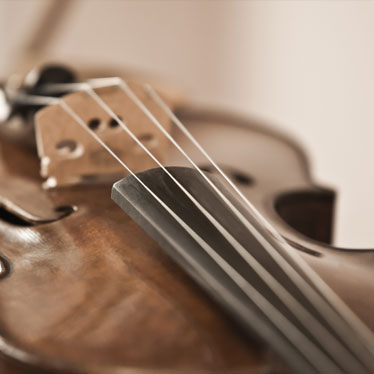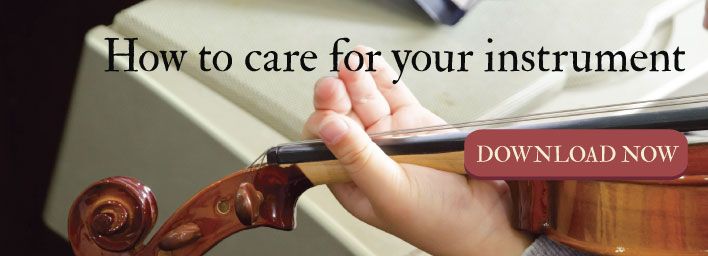What Is The Proper Way To String An Instrument

Knowing how to properly string your instrument is an important skill. You can’t always rely on a professional or your teacher to help you, so it’s something that you should learn during the first year of instruction. And while the exact stringing technique will depend on the type of instrument you have, many of the methods involved are universal.
Your strings are just like the other parts of your instrument, susceptible to the weather, humidity, and breakage. One of the worst things that can happen to a musician is realizing that you’ve broken a string before a performance but you don’t know how to replace it. Or even worse, you don’t have a back-up string. So it’s a good idea, once you’ve learned to properly string your instrument, to purchase and place a back-up string set in your instrument case. That way you’ll be prepared for an emergency.
In this blog, we’ll examine how to replace the strings on the violin. The methods are very similar for most other stringed instruments, but there is one thing you must always remember: Never remove all of your strings at once. The tension created by the strings, especially on the violin, holds the soundpost and the bridge in the right place. If you remove all of your strings, these parts will move and you’ll need to take your violin to a repair shop to have them re-set properly.
Violin String Replacement Basics
Violin strings are sold according to size, so there is no need to cut them. They are also retailed according to gauge and tension, and they feature colored silk on the peg end and have either a ball or loop on the tailpiece end.
Remember: Never remove all four strings at once.
First, gently loosen the peg on the string you’ve decided to replace. Starting with the G-string and progressing to the E-string is very typical because it is easier to tune from a lower pitch to a higher one. As you unwind the peg, carefully pull the string towards you so that the slack is taken up, and remove it.
Now is a great time to inspect your peg for fit and function.
Replacing the String
Step 1
If your violin is equipped with a fine tuner, go ahead and unwind it so that it will be easy to use later. Insert the ball end into the arms (tuner cartridge) on the tailpiece so that the string comes up over the top and gently pull the string towards the bridge. If you don’t have fine tuners on your violin, just insert the ball or loop end through the hole and give it a little tug to make sure it’s seated properly. (You may need to hold the string with your finger until you have enough tension to ensure it won’t slip out.)
Step 2
Pull the peg out as far as you can, so that the peg hole is as close to the inside edge of the box as possible and facing up. Some violinists bend the peg end of the string to form a small right angle; this makes it a bit easier to thread.
Step 3
Insert the peg end of the string into the hole and turn the peg towards the scroll (one and one-half rotation) so that the hole is facing the scroll.
Step 4
Wind the string around the peg by turning (towards the scroll) and gently pushing in the peg. The main thing to concentrate on is making sure that your string winds closely and evenly on the peg. This will simplify tuning and ensure that even pressure is distributed to maximize the lifespan of your string. It will also help limit how often you’ll need to tune your strings. Use pressure to make sure that the string is winding evenly.
Step 5
Bring the string into tune gradually by making small adjustments to the peg, and eventually using the fine tuner.
Other String Replacement Tips
- Be prepared to tune your new strings regularly over the first few days after replacement. As your new strings stretch, you’ll need to make frequent adjustments.
- It’s a good idea to carry a replacement set of strings with your instrument, but when you need a new set, try out different qualities and brands. You may find a new “go-to” set that really brings out the abilities of your instrument.
- Apply a soft lead pencil to the grooves on the bridge and the nut before you tighten the string completely. This will provide a little lubricant to prevent breakage.
Replacing the strings on your instrument is a basic skill that all musicians should know. And although it may seem tricky at first, with a little practice and patience, you’ll be an expert at it in no time.


